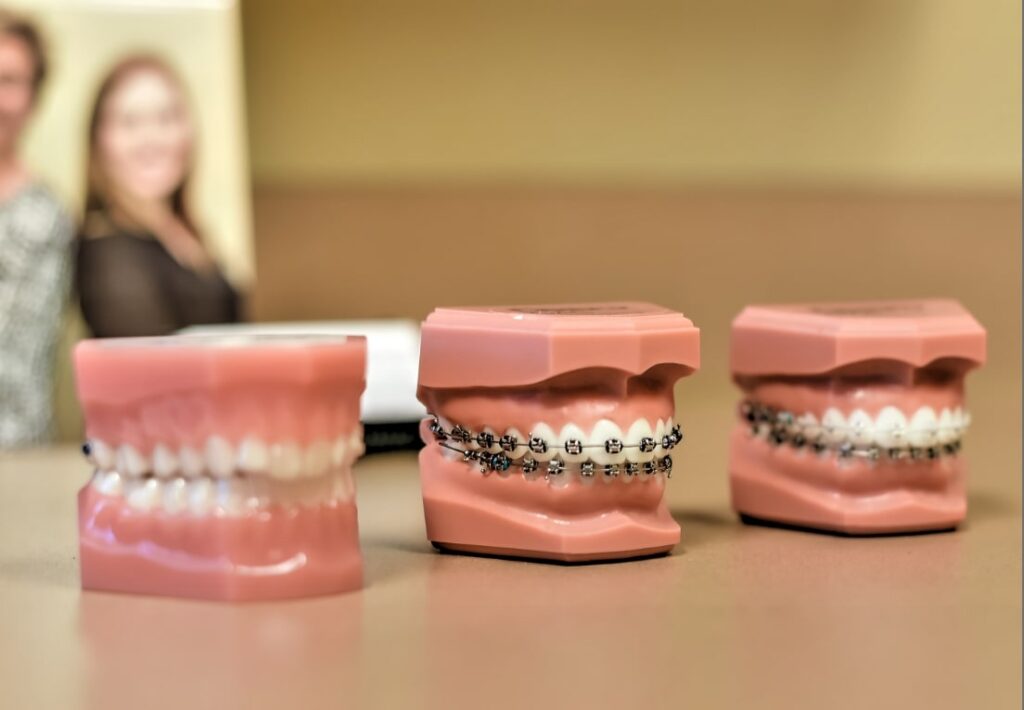Expert Cumming Braces and Aligners: What to Know Before You Go to
Wiki Article
Comprehensive Overview to Orthodontics Procedures for Dealing With Dental Imbalances
Recognizing the details of each treatment, including their mechanisms, benefits, and potential drawbacks, is crucial in making informed decisions about one's orthodontic therapy. As we browse with the extensive guide to orthodontic procedures for fixing dental imbalances, the complex details of each approach will unravel, losing light on the path towards a harmonious and practical dental positioning.Orthodontic Procedures Review

Along with conventional dental braces and clear aligners, orthodontists may likewise suggest other interventions like headgear, palatal expanders, or retainers to address particular alignment problems (cumming invisalign). These treatments are customized per patient's special requirements and may entail a combination of treatments to accomplish the desired results. Routine adjustments and monitoring are essential parts of orthodontic therapy to make sure progression gets on track and to make any required alterations along the means. By going through orthodontic procedures, people can not just accomplish a straighter grin yet likewise enhance their total oral health and feature.
Conventional Braces: Just How They Work
When taking into consideration orthodontic therapies for oral misalignments, traditional braces stand apart as a tried and true technique for correcting teeth placing. Traditional braces include braces, wires, and bands that function together to use constant stress on the teeth, slowly moving them right into the wanted positioning. The braces are connected to the teeth making use of a special adhesive, and the cords are threaded with the braces. By adjusting the tension of the cords, orthodontists can manage the instructions and force put on each tooth, leading them into correct placement with time.
One key element of exactly how standard braces job is the process of bone makeover. As pressure is related to the teeth with the dental braces, the bone surrounding the teeth is reshaped to sustain the new tooth positions. This improvement is important for the long-lasting security of the fixed placement. People will certainly need regular changes at the orthodontist's office to make sure the braces remain to apply the right pressure for reliable teeth motion.
Unnoticeable Aligners: Disadvantages and pros
These clear, personalized trays are essentially unseen when put on, making them an appealing alternative for individuals looking for a more visually pleasing orthodontic treatment. Patients can get rid of the aligners before consuming or cleaning their teeth, decreasing the threat of food getting stuck in the device and streamlining the cleansing process.
Surgical Orthodontic Options
Surgical interventions in orthodontics present viable alternatives for resolving intricate oral misalignments that may not be efficiently fixed with conventional orthodontic treatments. While typical dental braces and undetectable aligners can correct several orthodontic concerns, specific cases call for medical intervention to accomplish optimal outcomes. Surgical orthodontic options are usually recommended for severe malocclusions, substantial jaw disparities, and cases where the underlying bone structure needs adjustment to achieve proper placement.One common surgical orthodontic treatment is orthognathic surgery, which includes rearranging the jaws to fix functional issues such as trouble eating or talking. This surgery is usually executed in partnership with an orthodontist who helps straighten the teeth prior to and after the procedure. Surgical orthodontics might also entail procedures to anonymous reveal affected teeth, remove excess periodontal tissue, or reshape the jawbone to develop a more unified face profile.
Prior to considering medical orthodontic options, clients undertake an extensive analysis to identify the need and possible benefits of such treatments. braces. While surgical procedure might seem complicated, it can significantly enhance both the feature and visual appeals of the smile in instances where conventional orthodontic treatments fail
Retainers and Post-Treatment Treatment

Failing to conform with post-treatment treatment instructions can result in relapse, where the teeth slowly move back in the direction of their original positions. Consistent retainer wear, good dental health, and regular dental check-ups are important for maintaining the outcomes accomplished through orthodontic surgery and making certain the long-term stability of the dealt see with dental alignment.
Verdict
In conclusion, orthodontic procedures provide different choices for remedying oral imbalances. Surgical orthodontic options are available for more severe misalignments. Overall, orthodontic procedures can effectively boost dental health and visual look.As we navigate through the extensive overview to orthodontic treatments for fixing oral misalignments, the intricate information of each technique will certainly unfold, shedding light on the path towards a practical and harmonious oral positioning. - cumming orthodontics
One of the most usual orthodontic treatments is the use of dental braces, which consist of metal brackets and wires that apply gentle pressure to progressively move teeth right into the desired setting.When taking into consideration orthodontic therapies for dental misalignments, traditional braces stand out as a time-tested method for fixing teeth positioning. Additionally, undetectable aligners might not be appropriate for complicated orthodontic problems that need even more considerable teeth motion, as they are typically recommended for mild to modest instances. Retainers are personalized orthodontic tools made to hold teeth in their dealt with settings after the completion of orthodontic therapy.
Report this wiki page